Art of Power: Masterpieces from the Bute Collection
31 March 2017 - 14 January 2018*
Hunterian Art Gallery and Mount Stuart, Isle of Bute
Admission is now free
Download the Art of Power exhibition leaflet
*From 30 October the exhibition at Mount Stuart will be available by appointment only.
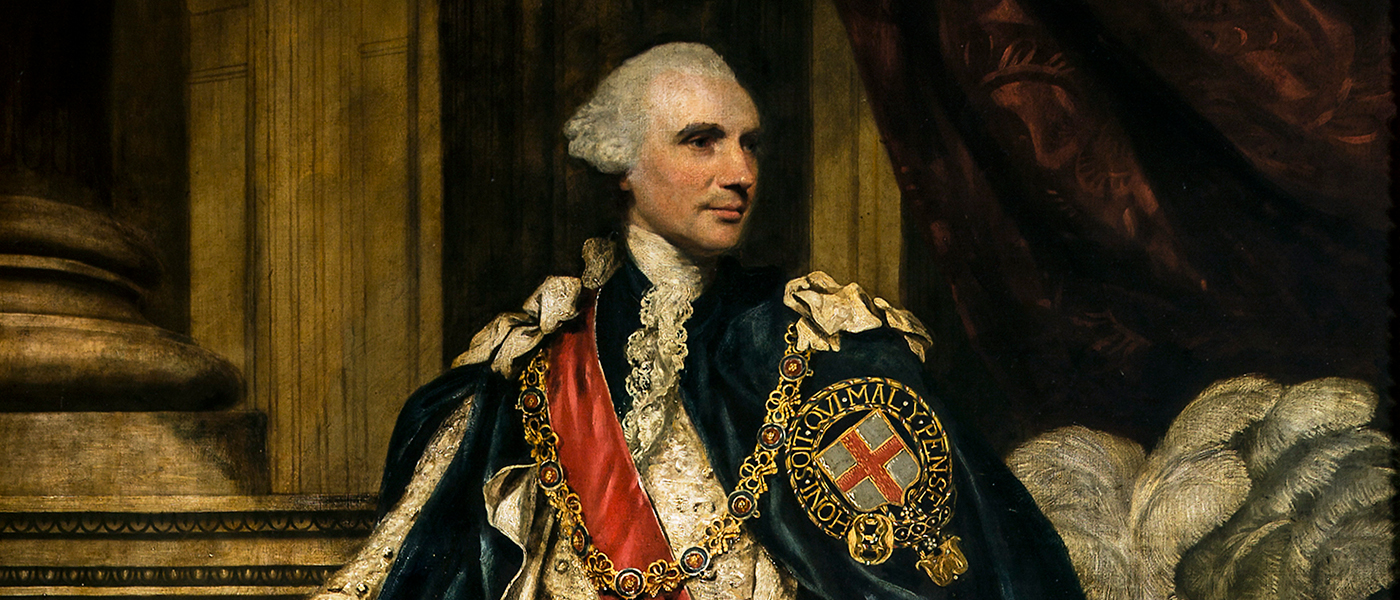
Introduction
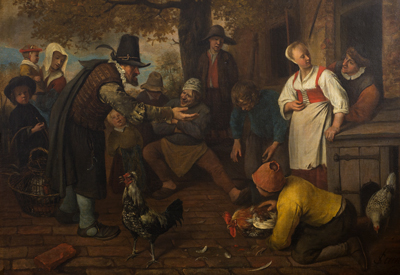 Art of Power: Masterpieces from the Bute Collection is a precursor to our William Hunter Tercentenary celebrations in 2018, which will mark the birth of Hunterian founder Dr William Hunter (1718 – 1783). The Tercentenary will highlight the truly unique place of Hunter and his collections in our understanding of the Enlightenment in Scotland and beyond, and his contribution to the formation of the modern museum as a public institution.
Art of Power: Masterpieces from the Bute Collection is a precursor to our William Hunter Tercentenary celebrations in 2018, which will mark the birth of Hunterian founder Dr William Hunter (1718 – 1783). The Tercentenary will highlight the truly unique place of Hunter and his collections in our understanding of the Enlightenment in Scotland and beyond, and his contribution to the formation of the modern museum as a public institution.
Art of Power reflects the collecting tastes of one of Hunter’s most important contemporaries at the Hanoverian Court, John Stuart, Third Earl of Bute (1713 – 1792) and offers a unique opportunity to see major paintings from the Bute Collection at Mount Stuart on the Isle of Bute, one of the foremost private collections of artworks and artefacts in the UK.
The exhibition is split across two venues, the Hunterian Art Gallery in Glasgow and Mount Stuart on the Isle of Bute. The ticket price covers admission to the exhibition at both. Visitors to The Hunterian will get a flavour of the collections at Mount Stuart. The concurrent exhibition at Mount Stuart presents works not normally seen as part of the tour.
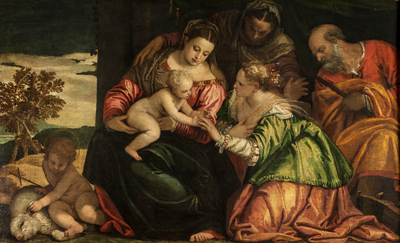 At The Hunterian, highlights include works by Claude Lorrain, Jan Steen, Aelbert Cuyp, and Jacob van Ruisdael. These are displayed alongside a selection of works on paper, including botanical illustrations and satirical prints.
At The Hunterian, highlights include works by Claude Lorrain, Jan Steen, Aelbert Cuyp, and Jacob van Ruisdael. These are displayed alongside a selection of works on paper, including botanical illustrations and satirical prints.
At Mount Stuart, highlights include works by Veronese, Frans Snyders, Pieter van Slingelandt and Joshua Reynolds. These are accompanied by historical artefacts, such as costume, letters, and rare books. Download the Download the Art of Power exhibition leaflet.
Header image: Sir Joshua Reynolds, John Stuart, 3rd Earl of Bute, 1773 (displayed at Mount Stuart).
Jan Steen, A Cockfight, c.1660-1670 (displayed at The Hunterian).
Paolo Veronese, The Mystic Marriage of St. Catherine, c.1555 (displayed at Mount Stuart).
John Stuart, Third Earl of Bute
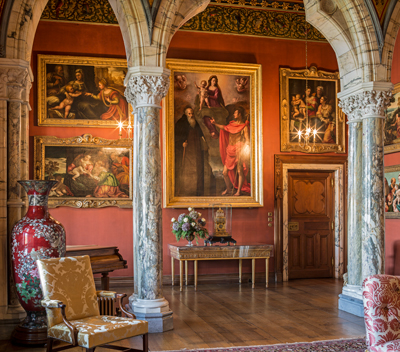 This exhibition brings to The Hunterian some of the wonderful paintings from the extraordinarily rich collections housed at Mount Stuart, the family seat of the Bute family on the Isle of Bute. The exhibition title alludes to one of the ancestors of the family, John Stuart, Third Earl of Bute, who was British Prime Minister from 1762-1763 and was a great art collector.
This exhibition brings to The Hunterian some of the wonderful paintings from the extraordinarily rich collections housed at Mount Stuart, the family seat of the Bute family on the Isle of Bute. The exhibition title alludes to one of the ancestors of the family, John Stuart, Third Earl of Bute, who was British Prime Minister from 1762-1763 and was a great art collector.
The major business of Bute’s premiership was ending the Seven Years’ War. Many thought that the terms which Bute agreed with France were too generous and he was rapidly forced from power. As mentor to the young George III, Bute had already been involved in buying works of art for the royal collection and, once freed from office, he bought a house at Luton, commissioned Robert Adam to turn it into a neo-classical treasure house for him, and proceeded to form one of the greatest art collections in Europe. Although paintings were sold by the earl’s 19th century descendants and Luton Hoo itself was destroyed by fire in 1843, many important works bought by the third earl remain in the collection at Mount Stuart.
Image: The drawing room at Mount Stuart.
A Picture Collection Created for Luton
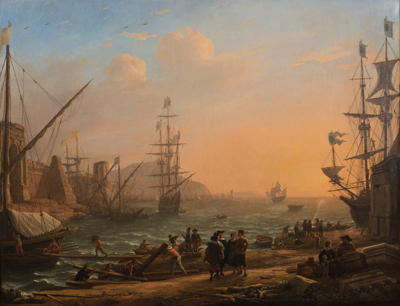 Situated a comfortable carriage ride from London, Luton Hoo provided in its parkland setting a perfect retreat. Bute had much to do: family life, study in his library, working with Robert Adam to create a great treasure house, and enjoying his expanding art collection.
Situated a comfortable carriage ride from London, Luton Hoo provided in its parkland setting a perfect retreat. Bute had much to do: family life, study in his library, working with Robert Adam to create a great treasure house, and enjoying his expanding art collection.
The grand rooms on the main floor were hung with large paintings bought for the purpose. In the library were magnificent landscapes by Francesco Zuccarelli as well as Dutch works by Berchem and two of the largest works in existence by Aelbert Cuyp. One of these, the River Landscape with Horsemen and Peasants, now hangs in the National Gallery in London, and is generally regarded as one of the greatest of all Dutch Golden Age paintings. Elsewhere on the ground floor were major works, such as Guercino’s Assumption of the Virgin altarpiece (now in Detroit), or the Rubens (workshop) and Snyders Kitchen Still Life (displayed at Mount Stuart).
The generally smaller Dutch and Flemish paintings were mostly hung on the bedroom floor where there was a Cabinet Room specially built for the display of small jewel-like pictures. In all there were about 500 paintings in the house, an extraordinary number, of which Bute’s contemporary Samuel Johnson, the great man of letters, commented: ‘The quantity of pictures is beyond expectation, beyond hope’.
Image: Claude Lorrain, Evening: A Seaport at Sunset, 1638 (displayed at The Hunterian).
Bute’s Dutch and Flemish Paintings
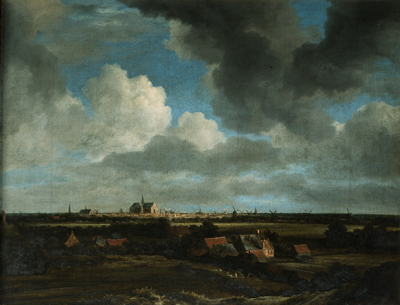 One of the great strengths of the Third Earl of Bute’s Collection were his Dutch and Flemish paintings, an area in which he developed remarkable expertise. He was advised by the artist and dealer Captain William Baillie, who had access to a network of dealers in Holland at a moment when important private collections were being dispersed. The emphasis of 18th century art theorists was on the excellence of Italian figure paintings, especially those which treated elevated literary and historical themes. By the 19th century, it was understood that Dutch and Flemish paintings, with their unvarnished representation of nature, and with subjects taken from everyday life, were an essential part of an important art collection. Among British collectors, Bute was something of a pioneer. Possibly his promotion of ‘natural’ landscapes and genre paintings is a reflection of his intellectual pursuits in natural history.
One of the great strengths of the Third Earl of Bute’s Collection were his Dutch and Flemish paintings, an area in which he developed remarkable expertise. He was advised by the artist and dealer Captain William Baillie, who had access to a network of dealers in Holland at a moment when important private collections were being dispersed. The emphasis of 18th century art theorists was on the excellence of Italian figure paintings, especially those which treated elevated literary and historical themes. By the 19th century, it was understood that Dutch and Flemish paintings, with their unvarnished representation of nature, and with subjects taken from everyday life, were an essential part of an important art collection. Among British collectors, Bute was something of a pioneer. Possibly his promotion of ‘natural’ landscapes and genre paintings is a reflection of his intellectual pursuits in natural history.
Bute studied in Holland and so it is possible that his affection for Dutch painting was stimulated by his time spent living there. Although no longer in the collection, he owned at least one painting by Rembrandt, and his collection of prints and drawings was rich in the master’s etchings. Works in the exhibition include landscapes by Cuyp, Ruisdael and Hobbema who were active in the late seventeenth century, but there is also an interesting group of works from the period 1615-1625 by De Momper in collaboration with Jan Brueghel I and by Roelandt Savery. These jewel-like works present people on a very small scale, actively enjoying the delights of nature, whether the fertile fields of Flanders or the Alpine scenes that were the special preserve of Savery.
Image: Jacob van Ruisdael, Distant view of Haarlem, c.1660 (displayed at The Hunterian).
Mount Stuart
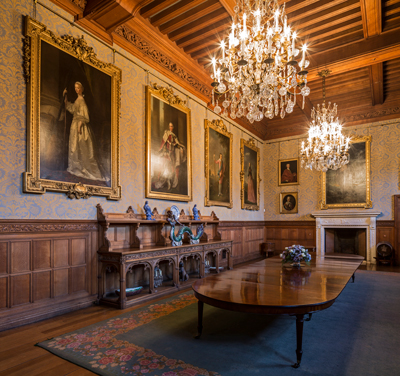 Mount Stuart is the family seat of the Bute family. The current house replaced an early 18th century building which was gutted by fire in 1877. It was the creation of the Third Marquess of Bute, who was a great patron of architecture and also commissioned Cardiff Castle and Castell Coch. Mount Stuart was designed by Sir Robert Rowand Anderson and built between 1880 and 1912. The house is an outstanding example of Gothic Revival architecture, set in beautiful grounds with historic plantations leading to the Firth of Clyde. It has many remarkable features, including the huge marble hall, the beautiful chapel, similarly constructed from beautiful and costly stone, and the world’s first indoor heated swimming pool. The house contains a large number of paintings acquired in the 18th century by the Third Earl of Bute for his house at Luton and which are the focus of this exhibition at The Hunterian and Mount Stuart. In the dining room and on the stairs is one of the most impressive collections of grand manner portraits to be seen in any of the great houses in Britain.
Mount Stuart is the family seat of the Bute family. The current house replaced an early 18th century building which was gutted by fire in 1877. It was the creation of the Third Marquess of Bute, who was a great patron of architecture and also commissioned Cardiff Castle and Castell Coch. Mount Stuart was designed by Sir Robert Rowand Anderson and built between 1880 and 1912. The house is an outstanding example of Gothic Revival architecture, set in beautiful grounds with historic plantations leading to the Firth of Clyde. It has many remarkable features, including the huge marble hall, the beautiful chapel, similarly constructed from beautiful and costly stone, and the world’s first indoor heated swimming pool. The house contains a large number of paintings acquired in the 18th century by the Third Earl of Bute for his house at Luton and which are the focus of this exhibition at The Hunterian and Mount Stuart. In the dining room and on the stairs is one of the most impressive collections of grand manner portraits to be seen in any of the great houses in Britain.
Image: Family portraits in the dining room at Mount Stuart.
The Bute Hall at the University of Glasgow
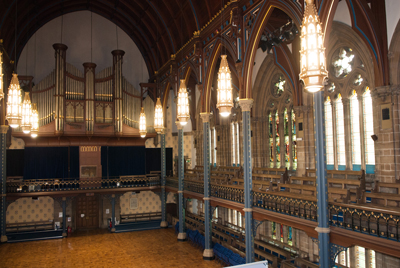 The name of Bute is constantly on the lips of staff and students at the University of Glasgow, because it applies to the university’s magnificent ceremonial hall. The Bute Hall, which seats 1000 people, is where degree ceremonies and other important events are held. The Hall is decorated with the motifs of cross, thistle and fleur de lys taken from the coat of arms of John Patrick Crichton-Stuart, 3rd Marquess of Bute (1847-1900), who contributed to the construction, and worked with the architect George Gilbert Scott on completing the buildings (1878-1884). The Marquess was one of the greatest of all patrons of architecture. He was the constructor of Mount Stuart, the family seat on the Isle of Bute, as well as other major Gothic Revival monuments including Cardiff Castle and Castell Coch.
The name of Bute is constantly on the lips of staff and students at the University of Glasgow, because it applies to the university’s magnificent ceremonial hall. The Bute Hall, which seats 1000 people, is where degree ceremonies and other important events are held. The Hall is decorated with the motifs of cross, thistle and fleur de lys taken from the coat of arms of John Patrick Crichton-Stuart, 3rd Marquess of Bute (1847-1900), who contributed to the construction, and worked with the architect George Gilbert Scott on completing the buildings (1878-1884). The Marquess was one of the greatest of all patrons of architecture. He was the constructor of Mount Stuart, the family seat on the Isle of Bute, as well as other major Gothic Revival monuments including Cardiff Castle and Castell Coch.
Image: The interior of the Bute Hall, University of Glasgow (University of Glasgow Photo Unit).
Events
Art of Power Symposium
Art of Power: The 3rd Earl of Bute, Politics and Collecting in Enlightenment Britain
2 - 4 October 2017
Hunterian Art Gallery and Mount Stuart, Isle of Bute
In 2017, the Mount Stuart Trust and The Hunterian, University of Glasgow, are hosting a major exhibition merging art, biography, politics and cultural history. Art of Power: Masterpieces from the Bute Collection uncovers the fascinating Enlightenment figure, John Stuart, 3rd Earl of Bute (1713-1792), and his collection of rarely-seen masterpieces.
A three-day interdisciplinary symposium inspired by themes of the exhibition will explore the dynamic interplay between art, politics and collecting so evident in the life of the 3rd Earl of Bute. Papers will be delivered on day one in Glasgow, and will be open to the public. Days two and three will take place at Mount Stuart, and will include tours of the house, archives and collection highlights.*
Confirmed speakers: Desmond Shawe-Taylor (Royal Collection); Rosie Razzall (Royal Collection); Anne T. Wollett (J. Paul Getty Museum); Anthony Lewis (Glasgow Museums); Wayne E. Frantis (Syracuse University); Graham Rowe (University of Derby); Heiner Krellig (University of Bamberg); Janet Stiles Tyson (independent); Oliver Cox (Oxford); Peter Black (The Hunterian); Mungo Campbell (The Hunterian); Caitlin Blackwell (Mount Stuart).
*Please note that a limited number of spaces will be available for this portion of the event, and will be reserved for invited delegates and speakers.
Art of Power Children's Workshop: Create your own gallery!
Saturday 22 July 2017
10.00am - 12.00pm
Admission free - booking required
Children aged between 8 and 12 are invited to book a place for this free workshop. Artist Tadgh McKendry will begin by teaching basic one point perspective drawing. These drawings will be used to create a mixed-media collage inspired by Frans Francken's A Collector's Gallery which is on display in the Art of Power exhibition.
Adults accompanying children participating in the workshop will be given a free ticket to explore the Art of Power exhibition.
Art of Politics: The Power of Caricature
Thursday 8 June 2017
12.45pm – 1.45pm
Hunterian Art Gallery (Art of Power exhibition then Hunterian Art Gallery Lecture Theatre)
Admission free - no booking required
Beginning with a short tour of our latest exhibition, Art of Power: Masterpieces from the Bute Collection, this lunchtime event will explore the evolving medium of caricature and the role it has played in political discourse.
John Stuart, Third Earl of Bute, had a tumultuous and short-lived time in office as the first Scottish-born Prime Minister. Bute’s experience of power can be characterised by a series of political caricatures, featured within the exhibition. On the day of the general election we will use these as a starting point to discuss the impact of caricature in historic and modern day political debate.
Join Peter Black, Curator at The Hunterian, Professor Laurence Grove, Professor of French and Text/Image Studies, University of Glasgow and Curator of Comic Invention, and Amy Todman, Curator of Political Collections, National Library of Scotland, for this informal event.
Art of Power 10 Minute Talk Programme
Every Wednesday from 12 April - 21 June 2017
1.00pm
Hunterian Art Gallery
Admission free
These free lunchtime talks relate to the Art of Power exhibition and feature expert speakers from The Hunterian, Mount Stuart and beyond.
12 April
Claude’s Evening and Morning
Claire Pace, Honorary Research Fellow, History of Art, University of Glasgow
19 April
“Hidden" Masterpieces: Claude and Jan Steen at Luton Hoo
Caitlin Blackwell, Bute Fellow, Mount Stuart
26 April
The Third Earl’s Public Image
Robert Ferguson
3 May
David Teniers' Interior of an Inn
Pippa Stephenson, Curator of Dutch and Flemish Paintings, Glasgow Museums
10 May
The Valkhof at Nijmegen by Jan van der Heyden
Ailsa Turner, Lecturer in History of Art, Centre for Open Studies, University of Glasgow
17 May
Johan Zoffany's portrait of The Ladies Anne, Caroline and Louisa Stuart
Anne Dulau, Curator, The Hunterian
24 May
Bute in London: John Wilkes, Boot and the 45
Matthew Sangster, Lecturer in English Literature, University Of Glasgow
31 May
Landscapes at Luton
Peter Black, Curator of Old Masters, The Hunterian
7 June
Frans Francken “A Collector’s Gallery”: The painting in the painting
Lola Sanchez-Jauregui, Curator, The Hunterian
14 June
The text of Euclid presented to Simson by Bute
Bob MacLean, Glasgow University Library
21 June
Thomas Pennant’s visit to Mount Stuart
Nigel Leask, Regius Professor of English Literature, University of Glasgow
Travel Directions
The Hunterian
The Hunterian is part of the University of Glasgow. The Hunterian Art Gallery, Mackintosh House and our Museums are located on the Gilmorehill campus, 3km west of Glasgow city centre.
Mount Stuart
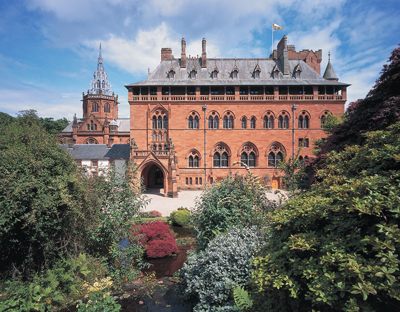 Mount Stuart is located on the Isle of Bute, approximately 90 minutes away from Glasgow by road/rail and ferry. A regular return service to Wemyss Bay runs from Glasgow Central station. www.scotrail.co.uk
Mount Stuart is located on the Isle of Bute, approximately 90 minutes away from Glasgow by road/rail and ferry. A regular return service to Wemyss Bay runs from Glasgow Central station. www.scotrail.co.uk
Caledonian MacBrayne (Calmac) operate two ferry routes offering a frequent daily service to the Isle of Bute - Wemyss Bay to Rothesay (approximately 35 minutes) and Colintraive to Rhubodach (less than 5 minutes). Mount Stuart is 5 miles south of Rothesay and is well signposted from the ferry terminal. www.calmac.co.uk
Parking is available at Mount Stuart within the vicinity of the Visitor Centre - courtesy transport available from the Visitor Centre to the main house. Pre-booked coach parking and blue badge parking available near the house.
Mount Stuart is 12 minutes from Rothesay by bus. West Coast Motors operate service 90/490 (493 on Sundays) to Kilchattan Bay from a stop outside the ferry terminal. www.westcoastmotors.co.uk
Mount Stuart
Isle of Bute
PA20 9LR
Open daily 24th March – 29th October 2017
House and Exhibition open daily (opening hours vary)
On occasional dates Mount Stuart may be closed for private events, please check before travelling. From 30 October the exhibition at Mount Stuart will be available by appointment only.
Telephone 01700 503 877
www.mountstuart.com
Acknowledgements
 Art of Power: Masterpieces from the Bute Collection is a collaboration between The Hunterian and the Bute Collection at Mount Stuart.
Art of Power: Masterpieces from the Bute Collection is a collaboration between The Hunterian and the Bute Collection at Mount Stuart.
The Hunterian would like to thank the following organisations for their support:
![]() Bute Collection
Bute Collection
Mount Stuart Trust
Tate Britain
Paul Mellon Centre for Studies in British Art
Scottish Government and the Government Indemnity Scheme
All images courtesy the Bute Collection at Mount Stuart unless otherwise stated.

